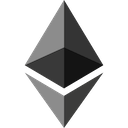When Bitcoin was created in 2009 it was the only cryptocurrency. This contrasts with the over 1000 different cryptocurrencies that exist today. Below, you can explore some of the largest cryptocurrency projects and their purposes. For a full list of cryptocurrencies, click here.
EXPLORE CURRENCIES
While Bitcoin Cash sounds like an improvement to Bitcoin, there is a large amount of evidence that suggests Bitcoin Cash may be an attempt to mislead the cryptocurrency community.
Firstly, most of the mining is centralised with a group of miners in China (remember, the more decentralised a cryptocurrency is, the less likely it is to be manipulated). Furthermore, the owner of Bitmain, the largest supplier of Bitcoin mining hardware, Jihan Wu, has made his website only accept payment in Bitcoin Cash. Due to the enormous demand for Bitcoin mining hardware, many people having to buy Bitcoin Cash before they can purchase mining hardware would artificially inflate the price. While Bitmain’s decision to only accept payment in Bitcoin Cash may not seem suspicious, the owner of Bitmain is also one of a handful of people that run Bitcoin Cash and hence, has a serious conflict of interests. Many people see this as price manipulation by the team leading Bitcoin Cash. Lastly, Bitmain miners use an exploit in Bitcoin that allows them to mine more efficiently. It is theorised that when the Bitcoin core developers decided to implement SegWit (which would have nullified this exploit), Jihan Wu decided to fork Bitcoin and create Bitcoin Cash which would allow these miners to continue using this exploit in order to mine more efficiently.
We must add that some of this evidence is circumstantial, however, a significant portion of the cryptocurrency community is suspicious of Bitcoin Cash. We highly recommend doing thorough research before purchasing Bitcoin Cash.







